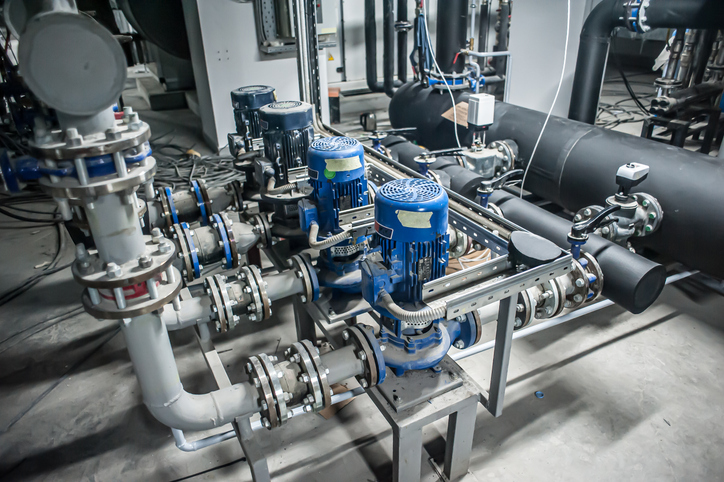The OEM’s Guide to Dealer Sales Enablement with Tacton
Learn how OEMs empower dealer sales teams with self-service quoting, product visualization, and aftermarket support with Tacton's CPQ.

OEMs are navigating a changing dealership model that requires a balance between direct digital channels and strengthened dealer partnerships. While buyers increasingly demand seamless, personalized experiences, dealers need the tools to remain central to the sales process without constant dependency on OEM support.
In order for manufacturers and their sales partners to profitably sell, personalize, and differentiate in the market, they need a connected sales system to collaborate across. This modernization creates an opportunity to strengthen the OEM-dealer relationship, positioning dealers as valued partners with the independence and capabilities to be your go-to-market partner.
Addressing Challenges in the Dealer Experience: What Modern Enablement Looks Like Today
The disconnect between traditional dealer models and modern buyer expectations creates significant challenges for both OEMs and their dealer networks:
| Feature | Traditional Dealer Model | Modern Dealer Experience |
| Sales Channel | Fragmented omnichannel experience for OEMs |
Omnichannel with direct sales and partner sales integrated into one CPQ platform
|
|
OEM-Dealer Collaboration
|
Limited data sharing | Unified platform with customized dealer environment |
|
Configuration Process
|
Manual, OEM-dependent | Automated, dealer self-service |
|
Dealer Sales Tools
|
Fragmented | Integrated with sales dashboard |
|
Customization
|
Limited dealer autonomy
|
Dealer-managed with OEM product rules
|
|
After-Sales Support
|
Localized, with fragmented support | Enhanced by OEM tools, dealer-managed |
This friction ultimately leads to inefficient sales processes, missed opportunities, and strained OEM-dealer relationships. In some markets, OEMs are also experimenting with more direct-to-customer models. However, for complex, highly customized products, the value of trusted dealer partners remains high. Strengthening, rather than replacing, these relationships through digital enablement allows OEMs to meet customer expectations while preserving local expertise. The most successful manufacturers understand that empowering their dealer sales teams with digital tools and essential data is key to creating an exceptional experience that benefits both dealers and OEMs.
A unified configuration platform like Tacton’s CPQ-based buyer engagement platform powers both OEM direct sales and dealer-assisted sales. Dealers can focus on providing expertise, local support, and valuable services.
Building Blocks for Modern Dealer Sales Enablement
OEMs can enable their sales partners in several key ways: by providing them with independent configuration capabilities, custom dealer dashboards, branded materials, visualization tools, and streamlined approvals.
1. Establishing a Unified Platform
Dealers often work with fragmented visibility on the latest product data, pricing, and availability. Configuration errors may lead to order issues and delivery delays, and back-and-forth communication between dealers and OEMs creates bottlenecks in the sales process.
A unified platform allows OEMs to empower their dealers with independent access while maintaining control of the product data. With their own licenses and permissions within the OEM’s CPQ architecture, dealers become autonomous sales partners capable of handling complex specifications without constant OEM support.
Tacton’s approach: one connected source of truth with dealer independence
It’s critical that OEMs and dealers work from the same system, but with appropriate permissions and environments. Within the Tacton CPQ architecture, dealers work within their own environment that allow them to:
- Configure complex products using the OEM’s constraint-based rules
- Access OEM product data and pricing (as their cost basis)
- Create their own pricing lists, branded materials, and quotes
- Track their sales pipeline and opportunities
- Request approvals when needed through automated workflows
Meanwhile, OEMs maintain control over product representation while reducing the support burden of managing dealer requests. Both OEMs and their sales partners access the system with configurations adjusted for their specific roles, with the product and sales data they need to make faster decisions.
2. Bringing Complex Products to Life
Heavy and specialty vehicles present unique visualization challenges. Physical showrooms can only display a fraction of possible configurations, and traditional product images fail to convey the scale and functionality of highly customized equipment.
Equip your dealers with advanced visualization tools that showcase any possible configuration without expanding physical inventory. These tools become powerful sales assets that dealers can use during customer presentations to demonstrate value and differentiate their offerings.
Tacton’s approach: dealer-controlled visualization tools
Enable dealership salespeople to generate powerful visual assets directly from their configurations. Dynamic 3D models and AR applications create those critical “aha” moments when customers truly grasp the value proposition.
Dealers can use these visualizations during in-person meetings, virtual presentations, or at customer locations to bring complex specifications to life. By controlling these visualization capabilities themselves, dealers become more effective product experts.
3. Capturing Aftermarket Value
Aftermarket services represent a significant revenue opportunity, yet many dealers struggle with limited visibility into installed equipment, difficult parts identification, and inefficient service scheduling.
Integrating capital equipment and service sales creates a continuous value stream throughout the product lifecycle. Dealers who can offer personalized service packages, simplify parts ordering, and proactively manage maintenance schedules strengthen customer relationships and capture additional revenue. For OEMs, improved aftermarket support increases customer satisfaction and lifetime value.
Tacton’s approach: a unified product and service platform
The ability to streamline and proactively seize aftermarket revenue is only possible with a platform that integrates capital market and service sales in one place. Dealers require visibility into installed base data and customer assets to tailor service or spare part offerings to specific equipment configurations.
Service teams can prepare for maintenance with the right parts and expertise, anticipate upgrade opportunities, and create personalized service packages based on actual usage patterns within Tacton’s platform. For dealers who provide both sales and service, this connected approach creates new touchpoints throughout the ownership experience, strengthening customer relationships and creating recurring revenue streams earlier in the buying journey.
Starting the Conversation with Your Dealers
Successful OEM-dealer transformation happens when conversations move beyond capabilities to focus on strategic partnership evolution. Position digital enablement as a true partner. Start by:
- Exploring configuration pain points: How much time does your team spend on configuration and quoting?
- Discussing aftermarket opportunities: What percentage of your customers return for service and parts? How could this be improved?
- Addressing competitive pressures: How are you competing with dealers or manufacturers who have strong digital sales tools or online configuration?
A successful dealer digital transformation follows these principles:
- Start with motivated partners: Begin with the most appropriate dealers who can pilot this transformation. Some dealers may be more digitally mature and eager to adopt new tools, while others may need a phased approach. OEMs should evaluate partner readiness and consider piloting digital tools with high-performing or innovation-minded dealers first, then expand based on lessons learned.
- Phase implementation: Focus on solving one critical pain point before expanding.
- Provide comprehensive support: OEMs should plan for technical onboarding, data alignment, and continuous dealer support to ensure long-term adoption and impact.
How HMF Cranes Made It Easy to Be a Sales Partner
HMF Group, a leading manufacturer of truck-mounted cranes, faced significant challenges with their manual quoting process. Complex product configurations led to errors where some solutions were not longer in the HMF portfolio. Communication internally and across their network was inefficient, and training new staff was time-consuming.
After implementing Tacton CPQ, HMF was able to create a single source of truth that benefited both the company and its relationship with its global distributor network:
- Every quote became correct and valid, eliminating errors and back-and-forth between OEMs and distributors.
- Communication between HMF and distributors became streamlined and efficient.
- New end-users could be onboarded faster with reduced training time.
- Pricing remained accurate and up to date despite economic fluctuations.
Product Manager Alicia Vivier Brockhoff states, “It’s easier to be a customer and an HMF distributor. It’s easier for us to implement new products and train new salespeople. There are a lot of great benefits.”
Strengthening OEM-Dealer Partnerships with Tacton
A modern, digital experience elevates your distributors’ roles in an increasingly complex market. Strengthen these vital relationships while creating the seamless experience customers demand.
Tacton’s CPQ and buyer engagement solution provides the digital foundation OEMs need to empower their dealer networks in today’s changing market:
- A connected sales platform
- Dealer-branded self-service
- Immersive visualization tools
- Integrated service sales
Industry leaders are already transforming their dealer relationships with Tacton, achieving error-free configurations, streamlined communications, and accelerated sales cycles. Contact us for a personalized demo to learn how your business can strengthen its sales channels.



